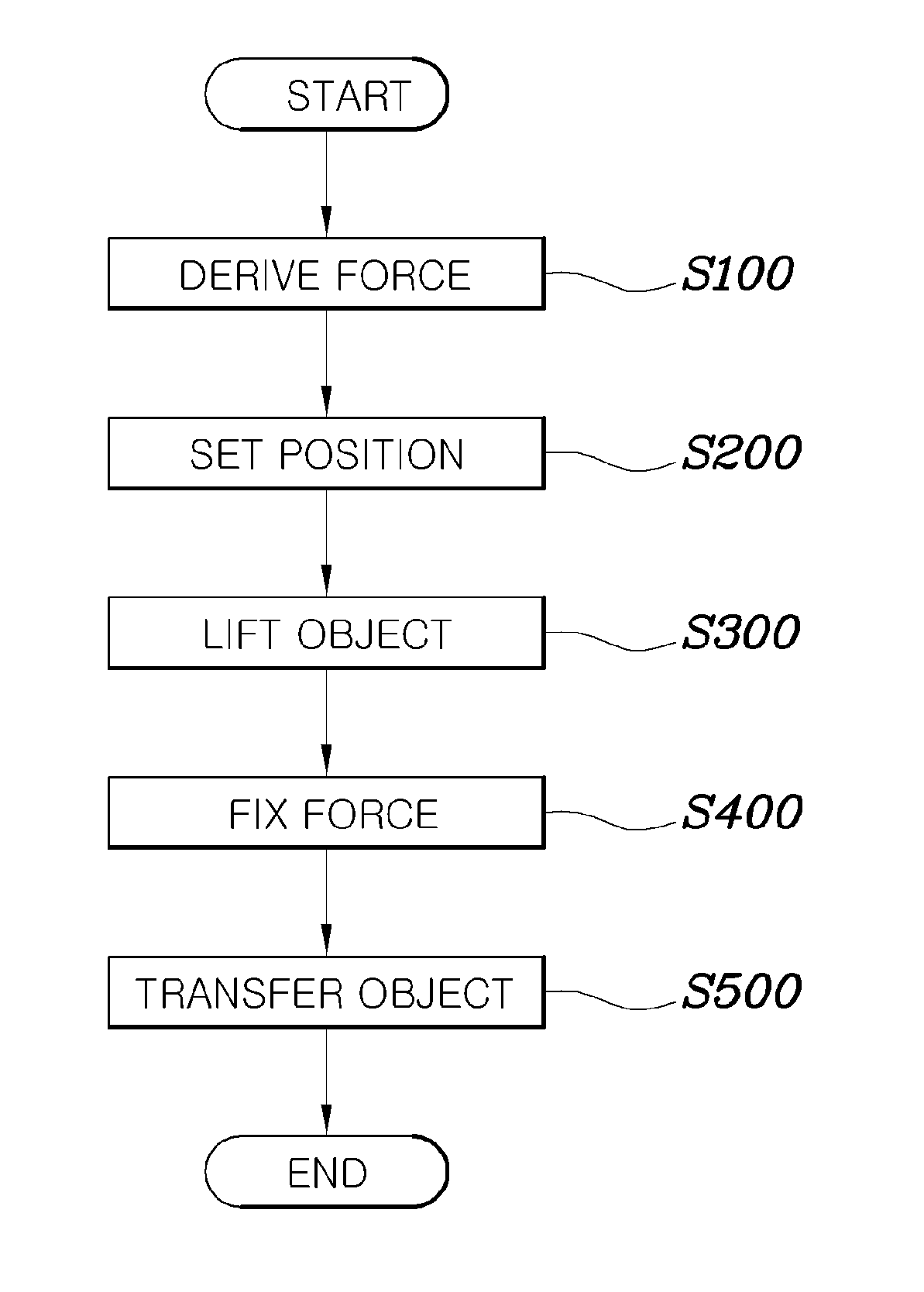Method and system for controlling lifting operation of wearable robot
- Summary
- Abstract
- Description
- Claims
- Application Information
AI Technical Summary
Benefits of technology
Problems solved by technology
Method used
Image
Examples
Embodiment Construction
[0023]Hereinafter, embodiments of a method and system for controlling the lifting operation of a wearable robot according to the present invention will be described in detail with reference to the attached drawings.
[0024]FIG. 1 is a diagram showing a system for controlling the lifting operation of a wearable robot according to an embodiment of the present invention, FIG. 2 is a diagram showing the control of the driving unit of the wearable robot of FIG. 1, and FIG. 5 is a flowchart showing a method of controlling the lifting operation of the wearable robot according to an embodiment of the present invention.
[0025]Referring to FIG. 5, a method of controlling the lifting operation of the wearable robot according to the present invention includes a force derivation step S100, a position setting step S200, a lifting step S300, and a fixing step S400. In step S100, a final force FT that must be applied by the robot to an object upon conducting a lifting operation is derived on the basis...
PUM
 Login to View More
Login to View More Abstract
Description
Claims
Application Information
 Login to View More
Login to View More - R&D
- Intellectual Property
- Life Sciences
- Materials
- Tech Scout
- Unparalleled Data Quality
- Higher Quality Content
- 60% Fewer Hallucinations
Browse by: Latest US Patents, China's latest patents, Technical Efficacy Thesaurus, Application Domain, Technology Topic, Popular Technical Reports.
© 2025 PatSnap. All rights reserved.Legal|Privacy policy|Modern Slavery Act Transparency Statement|Sitemap|About US| Contact US: help@patsnap.com



